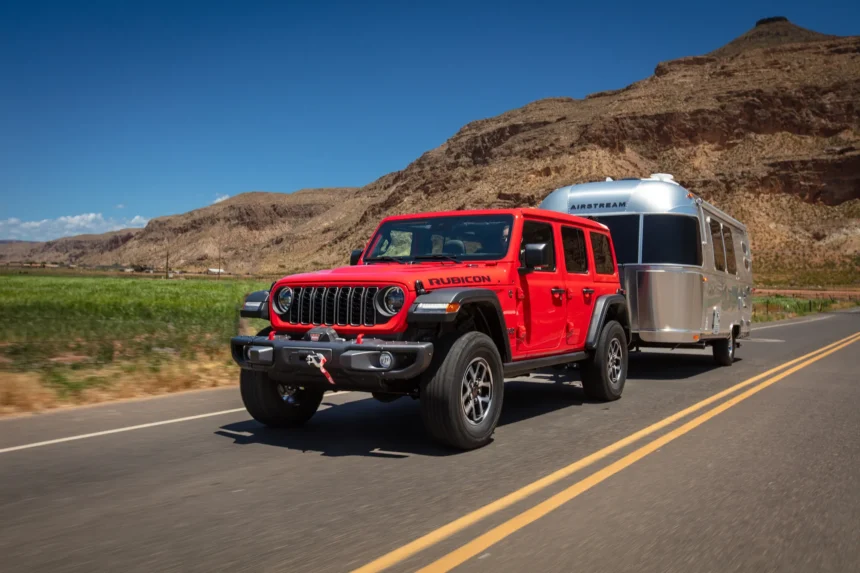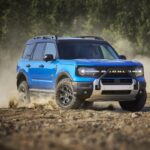The Jeep Wrangler and Jeep Gladiator are two iconic vehicles that offer off-road capabilities and classic Jeep style. Both models have their own unique features and specifications that cater to different types of consumers. In this article, we will compare the two models in terms of prices, features, performance, fuel economy, towing capacity, and payload.
Starting with prices and features, the base Wrangler Sport S costs around $34,000, while the base Gladiator Sport is priced at about $40,000. The Gladiator is available in various models such as Sport, Nighthawk, Sport S, Willys, Rubicon, Rubicon X, Mojave, and Mojave X, with prices ranging from $40,000 to $53,000. On the other hand, the Wrangler comes in Sport, Sport S, Willys, Sahara, Rubicon, and Rubicon X models, with the base model starting near $34,000 and the Sahara model priced at $51,000. Both models come with a 3-year/36,000-mile warranty that includes three years of scheduled maintenance.
In terms of performance, both the Wrangler and Gladiator come with a 3.6-liter V-6 base engine that produces 285 hp. The Wrangler offers a 6-speed manual transmission exclusive to the V-6, while the Gladiator comes with an 8-speed automatic transmission. The Wrangler also has additional engine options such as a 2.0-liter turbo-4 and a plug-in hybrid option, which provide stronger acceleration and improved efficiency. The Gladiator has a fuel economy of 17 mpg city, 22 highway, 19 combined with the automatic transmission, while the Wrangler’s fuel economy varies depending on the engine choice.
When it comes to towing capacity and payload, the Gladiator outperforms the Wrangler. The Gladiator can tow up to 7,700 pounds and carry up to 1,710 pounds of payload, while the Wrangler can tow up to 5,000 pounds with the Rubicon model and has lower towing capacities for other models ranging from 2,000 to 3,500 pounds.
Overall, both the Jeep Wrangler and Jeep Gladiator have their own strengths and weaknesses. The Wrangler is more budget-friendly with a lower price of entry, while the Gladiator offers higher towing capacity and payload. Depending on your preferences and needs, you can choose the model that best suits your lifestyle and off-road adventures. The Jeep Gladiator is a unique offering in the mid-size pickup truck market, branching off from the iconic Jeep Wrangler. The Gladiator shares many design cues with the Wrangler, including the signature seven-slot grille, rounded hood, circular headlights, and separate front fenders. The rear of the Gladiator features a squared-off bed behind the crew cab, giving it a classic look with clear roots back to WWII jeeps.
One of the standout features of the Gladiator is its convertible nature, being the only convertible pickup truck on the market. Owners have the option of choosing between two soft tops or a three-piece modular hard top. Just like the Wrangler, the Gladiator allows for the windshield to be folded down, doors to be removed, and half doors to be ordered for an open-air driving experience.
The Gladiator offers a variety of customization options, including different graphics, black or body-colored fenders and grille, and a range of wheel sizes from 17 to 20 inches. The interior of the Gladiator features retro cues with round air vents and dual levers for the shifter and four-wheel-drive system. A touchscreen display, available in either 7.0 or 8.4 inches, adds a modern touch to the dash, which is predominantly made of plastic.
In terms of off-road capabilities, the Gladiator is a solid performer, with all models being good off-road. The Rubicon and Mojave models take it a step further with heavy-duty front and rear axles, rock rails, locking front differentials, and all-terrain tires. The Mojave model is designed for high-speed off-roading adventures, while the Rubicon excels in traditional low-speed off-roading. The Gladiator’s longer wheelbase contributes to its versatility, while the Wrangler’s shorter wheelbase gives it better maneuverability in tight spaces.
Overall, the Jeep Gladiator combines the ruggedness and off-road capabilities of the Wrangler with the practicality of a pickup truck, making it a versatile and unique option in the mid-size truck segment. The Jeep Wrangler is an SUV that exudes iconic appeal with its rugged design and off-road capabilities. With the ability to wash out the cabin after off-roading adventures, thanks to the use of plastic and other basic materials, the Wrangler is a practical and versatile vehicle for outdoor enthusiasts.
The newly updated Wrangler features a unique grille design to accommodate a factory-installed Warn winch on the front. Available in various models with different graphics and color options for the grille and bumpers, the Wrangler offers a customizable look for every driver. The interior of the Wrangler is modernized with a new 12.3-inch touchscreen and an updated instrument cluster, while maintaining the utilitarian feel of the Gladiator.
In terms of safety, both the Gladiator and Wrangler fall short with the absence of standard automatic emergency braking. However, optional safety features such as blind-spot monitors and rear parking sensors are available for both models. Crash-test ratings for both vehicles have been less than stellar, with mediocre scores from the IIHS and NHTSA.
Despite their safety shortcomings, the Gladiator and Wrangler excel in off-road performance and open-air driving experiences. The decision between the two models ultimately comes down to personal preferences and intended use. Whether you prioritize the Gladiator’s bed or the Wrangler’s more efficient powertrains, both vehicles offer a unique blend of style and capability for adventurous drivers.
Overall, the Wrangler edges out the Gladiator with a slightly higher TCC Rating of 5.4 out of 10. Whichever model you choose, the Jeep Wrangler and Gladiator are sure to provide endless thrills on and off the road. The world of fashion is constantly evolving, with new trends and styles emerging every season. One of the most exciting aspects of the fashion industry is the way in which designers are constantly pushing the boundaries and experimenting with new materials, patterns, and silhouettes.
One of the latest trends that has been making waves in the fashion world is the use of sustainable and eco-friendly materials. With the growing awareness of the environmental impact of the fashion industry, many designers are now turning to more sustainable options when creating their collections.
One such material that has been gaining popularity in recent years is recycled polyester. Made from recycled plastic bottles, recycled polyester is a great alternative to traditional polyester, which is derived from non-renewable resources. Not only does recycled polyester help to reduce the amount of plastic waste in our landfills and oceans, but it also requires less energy and water to produce, making it a more environmentally friendly option.
Another sustainable material that has been gaining traction in the fashion industry is organic cotton. Grown without the use of harmful pesticides and chemicals, organic cotton is not only better for the environment, but also for the farmers who grow it. Many designers are now incorporating organic cotton into their collections, creating stylish and eco-friendly pieces that are both chic and sustainable.
In addition to using sustainable materials, designers are also looking for ways to reduce waste in the production process. One innovative approach that some designers are taking is zero-waste patterning, where garments are constructed in a way that minimizes fabric waste. By carefully planning the pattern layout and utilizing every last scrap of fabric, designers are able to create beautiful garments while reducing the amount of waste that ends up in landfills.
Overall, the fashion industry is increasingly embracing sustainability and eco-friendly practices, with designers incorporating recycled materials, organic fabrics, and zero-waste techniques into their collections. By making these environmentally conscious choices, designers are not only helping to reduce the industry’s impact on the planet, but also setting a positive example for consumers and other designers to follow. With sustainability at the forefront of fashion trends, it’s clear that the future of fashion is looking greener than ever.







